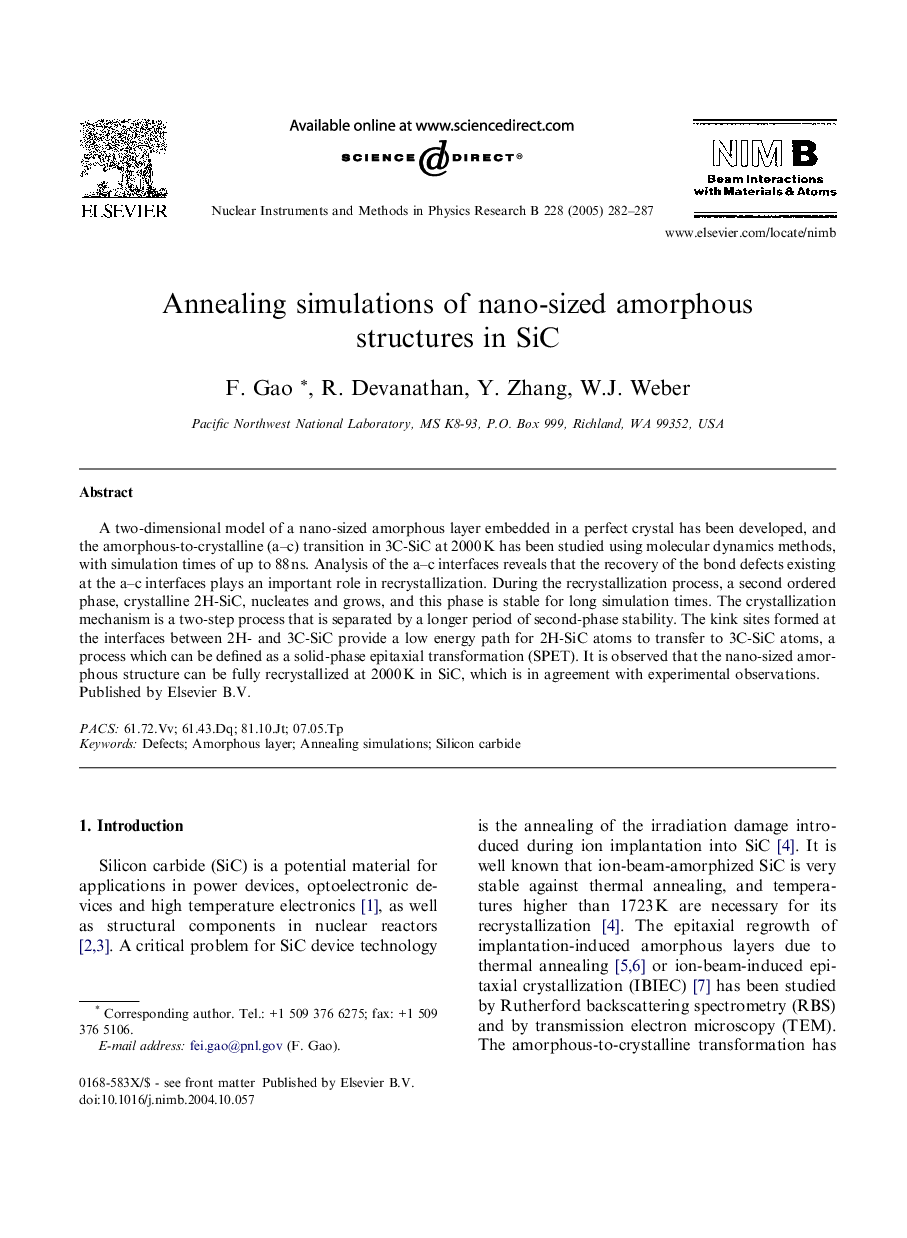| Article ID | Journal | Published Year | Pages | File Type |
|---|---|---|---|---|
| 9818418 | Nuclear Instruments and Methods in Physics Research Section B: Beam Interactions with Materials and Atoms | 2005 | 6 Pages |
Abstract
A two-dimensional model of a nano-sized amorphous layer embedded in a perfect crystal has been developed, and the amorphous-to-crystalline (a-c) transition in 3C-SiC at 2000Â K has been studied using molecular dynamics methods, with simulation times of up to 88Â ns. Analysis of the a-c interfaces reveals that the recovery of the bond defects existing at the a-c interfaces plays an important role in recrystallization. During the recrystallization process, a second ordered phase, crystalline 2H-SiC, nucleates and grows, and this phase is stable for long simulation times. The crystallization mechanism is a two-step process that is separated by a longer period of second-phase stability. The kink sites formed at the interfaces between 2H- and 3C-SiC provide a low energy path for 2H-SiC atoms to transfer to 3C-SiC atoms, a process which can be defined as a solid-phase epitaxial transformation (SPET). It is observed that the nano-sized amorphous structure can be fully recrystallized at 2000Â K in SiC, which is in agreement with experimental observations.
Related Topics
Physical Sciences and Engineering
Materials Science
Surfaces, Coatings and Films
Authors
F. Gao, R. Devanathan, Y. Zhang, W.J. Weber,
